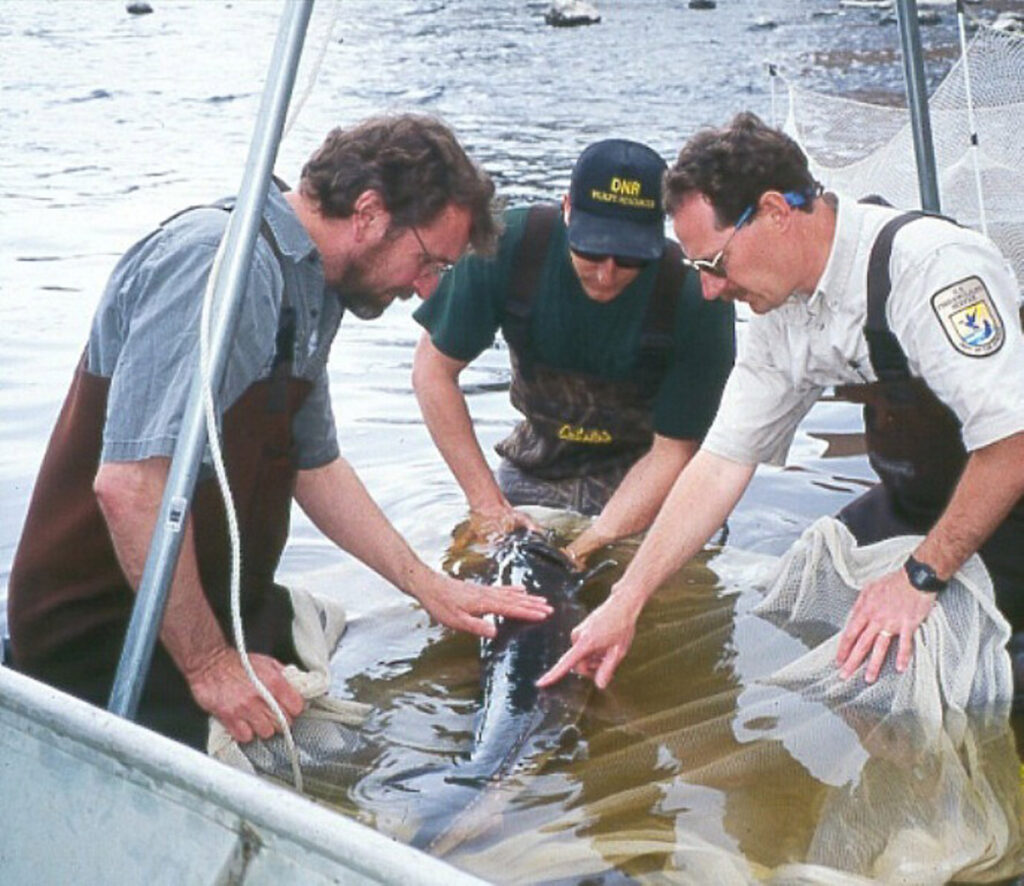The Way We Worked: Protecting Wildlife in the Water

Native Americans revered the lake sturgeon as an important part of their culture that provided food, oil, leather and other staples.
U.S. Fish and Wildlife Service biologist Rob Elliot of the Green Bay Fish Resource Office, right, examines an adult lake sturgeon with Tom Meronek of the Wisconsin Department of Natural Resources, center, and Greg Banker of the Stockbridge-Munsee Indian Community Conservation Office. The Green Bay Fish and Wildlife Conservation Office implements the Fish and Wildlife Service’s fisheries programs in the Lake Michigan and Great Lakes basins to conserve, protect, manage, and restore native fish and wildlife resources. Its activities include: native fish restoration; fish population assessment and survey design; fisheries management; marking of trout and salmon stocked into the Great Lakes basin; aquatic habitat evaluation and restoration; and monitoring and responding to the introduction and spread of aquatic invasive species.
Did You Know?
The U.S. Fish and Wildlife Service, part of the Interior Department, traces its roots to 1871, when the U.S. Commission on Fish and Fisheries was created to remedy a decline in fisheries. Learn more at https://fws.gov/.
About the Society for History in the Federal Government
Photo from the records of the U.S. Fish and Wildlife Service, National Archives, courtesy of the National Archives History Office, in collaboration with the Society for History in the Federal Government (SHFG), bringing together government professionals, academics, consultants, students and citizens interested in understanding federal history work and the historical development of the federal government. To join, visit www.shfg.org.
The Way We Worked celebrates the past 100 years of public service through archival images.


